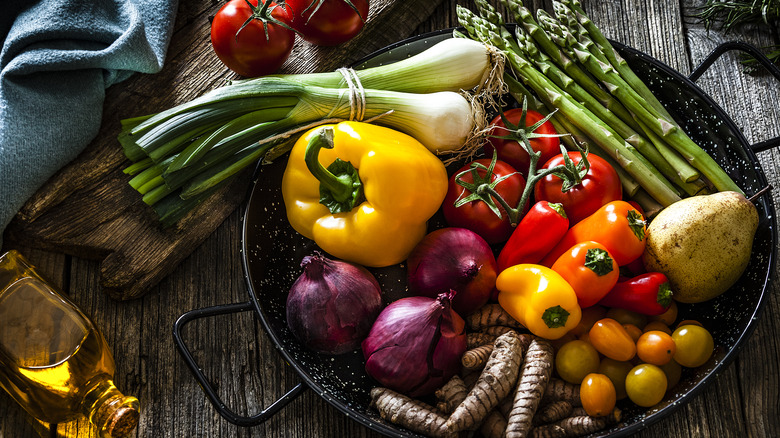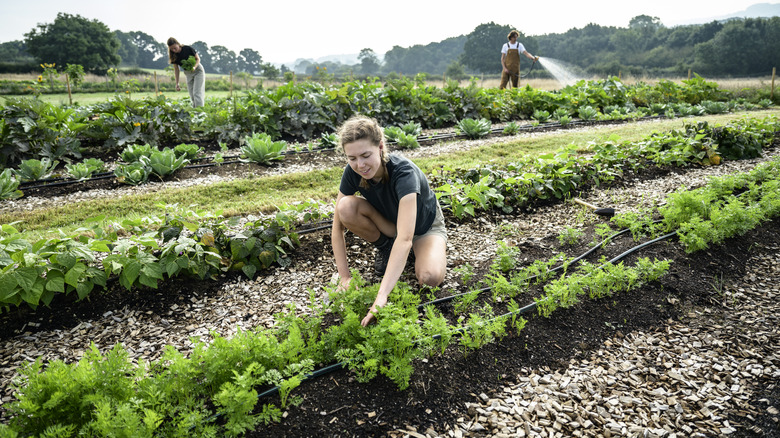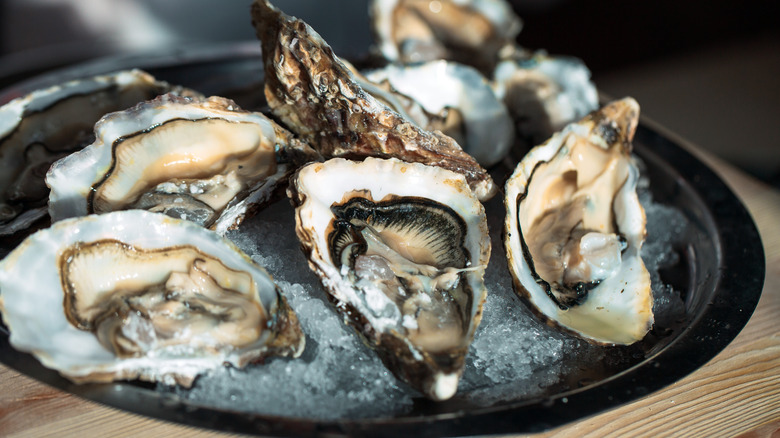Knowing Where An Ingredient Comes From Will Help You Make The Most Of Its Flavor
The word "terroir" is typically used when talking about wine, but it applies to any food that comes from the earth (so, everything). "Terroir" comes from the French word for "land," but soil is only the beginning of the way the idiosyncratic minutiae of particular geographic regions can affect an ingredient.
To illustrate what we mean, take the case of the former Terroir Chocolate (now Sted), which features chocolates with subtle flavors specific to each region where the cocoa beans were produced. Kristin and Josh Mohagen launched this business after detecting notes of green pepper in a glass of wine during a tasting in Napa Valley. The grapes, it turned out, had been grown in a vineyard near a pepper field, and the crops imparted their flavor on the vino. For this reason, the Mohagens call terroir "a sense of place" (via ScienceNews), a definition that encompasses a more abstract and dimensional understanding of an ingredient as part of a larger landscape.
Terroir breaks down into four main components: climate, soil, topography, and surrounding plants. Impressionable produce like tomatoes, peaches, onions, green beans, potatoes, and more are affected by neighboring plants, insects, microbes, harvesting practices, and topographic elements like land elevation or the directional orientation of a particular hillside. It's a very "foodie" thing to care about, but it can also make a huge difference in your dishes.
How does terroir affect produce?
Terroir includes the full spectrum of growing conditions, from soil composition to temperature, rainfall, sun exposure, wind, soil drainage, and altitude. All of these factors impact the quality and flavor of an ingredient. Broader macroclimate refers to regions like the Mediterranean versus southern India, and it's why food grown in Italy's Po River Valley tastes pretty different from the same crop grown in Argentina or Seattle. Terroir also includes the more specific microclimate, which is why wines from Bordeaux, France are so prized — and vastly different from wines grown in Burgundy, France, which are also highly sought-after. If there are other plants growing nearby, especially fragrant varieties like eucalyptus, lemongrass, roses, or hibiscus, that can affect an ingredient, too.
To know terroir is to know the ins and outs of an ingredient, and familiarizing yourself with its particular characteristics means you'll have a better understanding of how to best prepare it or incorporate it into a dish. Genetic and environmental influences can even create a unique chemical signature. For instance, high levels of Penicillium fungi in the soil can give wine grapes a mushroomy taste, while high levels of the hexyl glucoside molecule can impart a grassy aroma. The natural rate of yeast fermentation is affected by growing conditions and can create a sweeter or more bitter flavor in produce. If your ingredients carry a particular flavor like one of these, that's something you'll want to know about as you craft your dish.
Impact on seafood and livestock
Terroir isn't just about fruits and veggies — it also impacts livestock. For instance, Irish cattle are prized around the world because Ireland's grass-fed, free-range cows are raised on small-scale farms, which are often family-owned and generations old. These cows make some of the most tender, high-quality, highly praised beef on the market, but they also produce gold-star milk that in turn creates a knockout class of cheeses, grazing on the lush fields that have earned the country its nickname "the Emerald Isle."
Seawater and coastal regions are a part of terroir, too. It's why Nova Scotia lox are such a big deal, or why oysters are separated on fine-dining restaurant menus by the waters from which they're caught. Water conditions (salt concentration, temperature, and mineral composition) create a specific taste in seafood; it's why, for instance, wild-caught Alaskan rainbow trout taste different from trout that were raised on a farm.
Terroir is also the reason why coffee beans are often differentiated by origin. Ethiopian beans tend to tote a fruity, acidic profile, while Brazilian beans are richer and more full-bodied with notes of chocolate and toffee. So whether you're cooking with peanuts grown in China or PEI mussels, knowing where an ingredient comes from can separate the novice home cook's dishes from plates assembled by a seasoned industry professional. Learn what you can about your ingredients' origins and adjust your dishes accordingly — you may find that even your favorite go-to meals can take on a whole new flavor.


